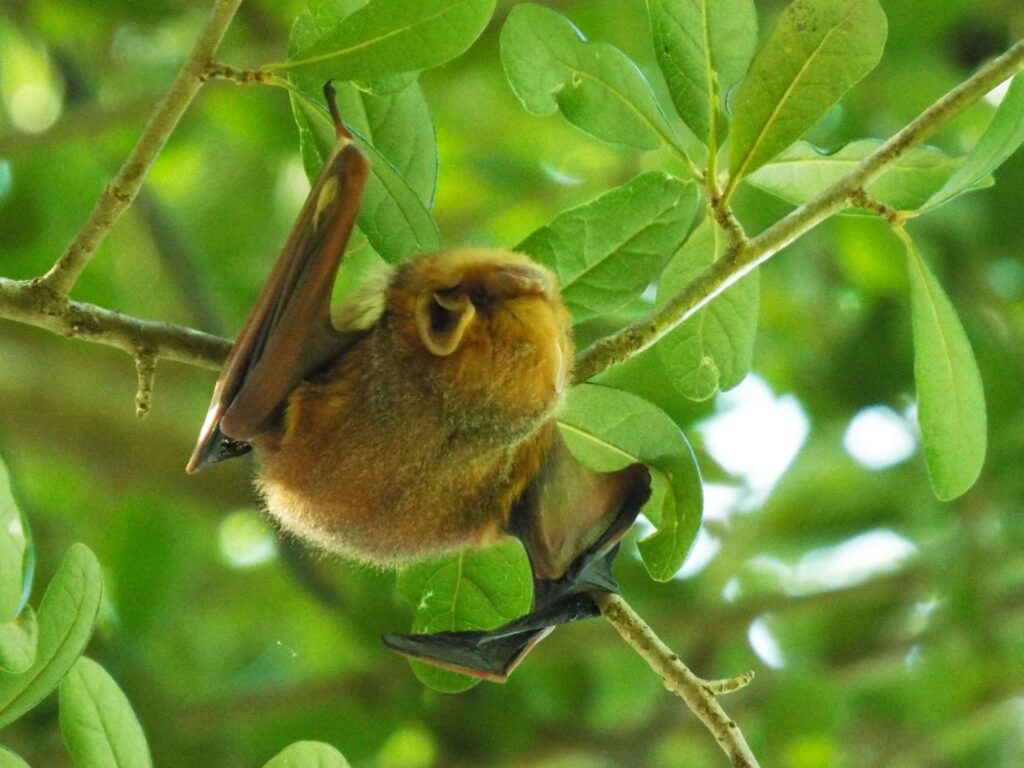
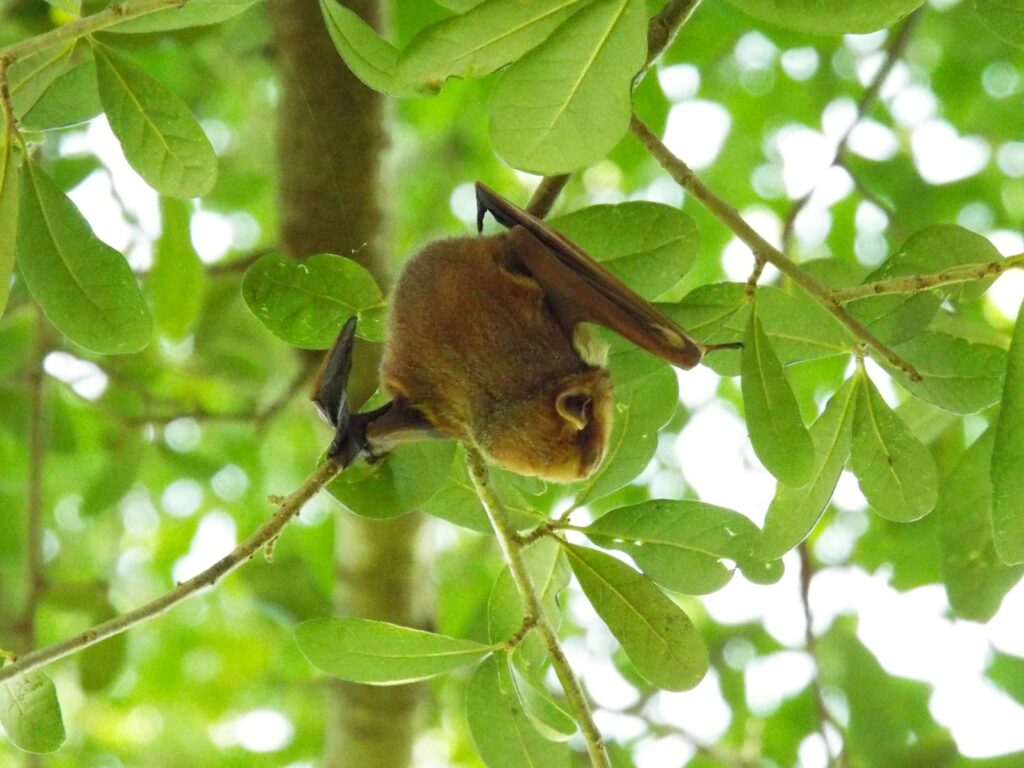
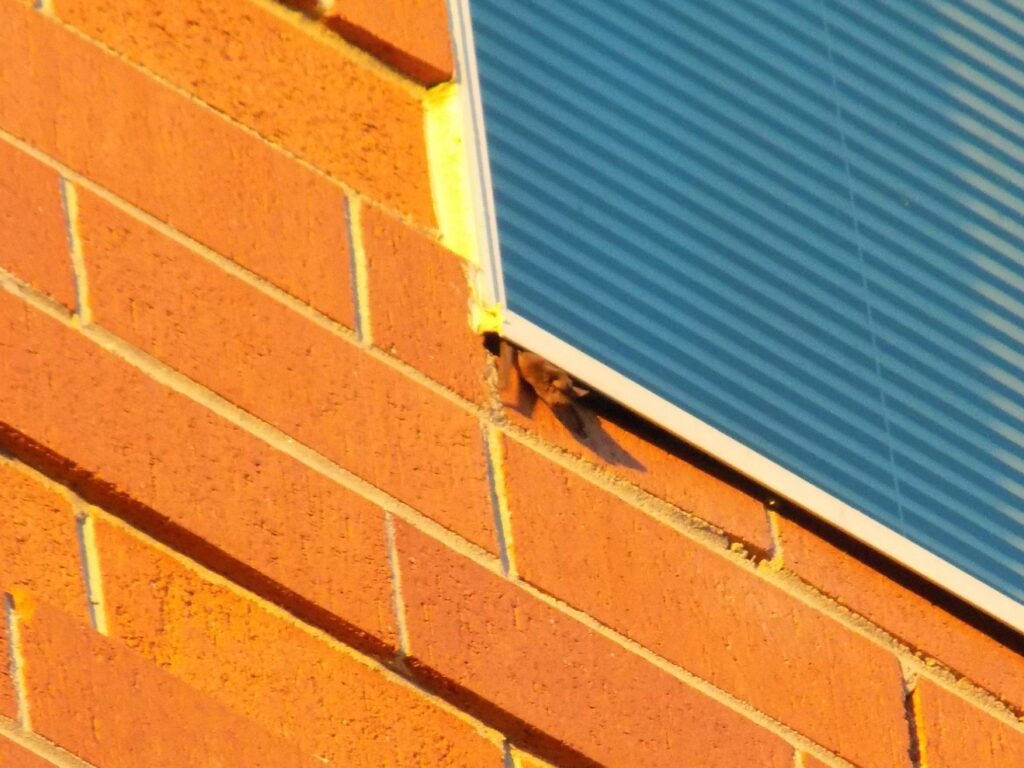
This week for Flora and Fauna Friday we have our one and only flying mammals, the Micro-Bats of superfamily Vespertilionoidea.
I’ll be the first to tell you that, like most of us, I don’t know much of anything about our bats. Their nocturnal habits and frantic flying make for difficult observation and their supersonic calls go unheard by us ground dwellers. So today we’re going to stay very general and I’ll just be looking at our bats as a group. Bats are the only mammals capable of true flight. Their wings consist of a membranous skin stretched between their elongated fingers and down along their bodies. Bats are broadly divided into two groups, the Mega-Bats and the Micro-Bats. Mega-Bats, also called fruit bats, are found only in the old world and, as the name implies, can get quite large. Here in the United States, we only have Micro-Bats. Here in South Carolina, fourteen species of bat belonging to two families fill our night skies throughout the year. Some are quite rare and others quite common. Without having a bat in the hand or spying one out in the daylight, they’re near impossible to identify to species. Yet, much like birds, bats can be identified acoustically by their calls but, unlike birds, bat voices are ultrasonic and require specialized microphones to record and transform their calls into something audible to humans. Scientists have used this to great effect in studying bat populations across the world.
One common type of bat call is echolocation. Bats can emit high pitched clicks that, just like sonar, bounce off of obstacles and flying insects. They then listen for the echo of their call and discern its sonic signature to locate and hunt their prey all while avoiding collisions with buildings and trees. Additionally, contrary to the old saying bats have pretty good eyesight and can often be spotted catching insects in the dim twilight or beneath a full moon. During the day, bats return to a roost to sleep the day away. Depending on the species, our Bats would have naturally roosted in caves, hollow tree trunks, or out in the open on tree limbs. Nowadays, they can also be found under bridges, in tunnels or mines, abandoned barns, or even in attics. An easy way to create bat habitat is to build and install a bat box, which provides roosting habitat for certain species of bats.
Over winter, when food is scarce, bats will hibernate. Some solitary bats will simply hang out in the trees or even burrow into the leaf litter for insulation when freezing temperatures approach. The more social bat species retreat to more permanent roosting sites, called hibernacula, to hibernate in groups. Bats can enter a state called torpor where their metabolism is dramatically reduced and their body temperature plummets. This allows them to stay inactive for weeks or months at a time while barely using any energy. In the last decade, the social bats hibernating in the upstate have been hammered by a fungal disease called White-nose Syndrome that was recently introduced to the United States. This disease thrives in the cool moist atmosphere of Appalachian caves and, once it enters a hibernacula, can rapidly spread through the hibernating bats for years to come. So far in South Carolina, five of our fourteen species of Bat are known to be impacted by White-nose syndrome and some, like the Tricolored Bat, have seen incredible population declines. Thankfully, some of our Bat species appear to be resistant to the disease and those with more solitary lifestyles, or that don’t regularly hibernate, are not at great risk for contracting it in the first place. The USFWS, SCDNR, adjacent state wildlife agencies, and researchers are working frantically to understand the disease and prevent hibernacula from becoming infected where possible.



This week for Flora and Fauna Friday we have a small evergreen tree with a bit of an identity crisis, the Carolina Laurel-Cherry (Prunus caroliniana).
Carolina Laurel-Cherry is found throughout the southeastern coastal plain. It usually grows between fifteen and thirty feet tall. It tolerates shade and is often found growing on forest edges, under larger trees, or in thickets. It has smooth-ish, dull-gray bark and a bushy growth habit. Its leaves are simple, elliptical evergreen with a deep green color often tinted with a purplish-red cast. In mid-March, Carolina Laurel-Cherry goes into full bloom, becoming festooned with plumes of pearl-white flowers. Pollinated flowers grow into a black, egg-shaped drupe which takes until the following winter to mature. Carolina Laurel-Cherry, or just Cherry-Laurel, was christened with its confusing common name due to its resemblance to the Bay Laurel. The Bay Laurel, from which we get Bay leaves for seasoning, is also a small shrubby tree with large, simple, evergreen leaves and a black egg-shaped fruit, but with clusters of butter-yellow flowers instead of spikes of white. So “Laurel-Cherry” is a pretty apt common name for a Cherry that looks like a Laurel but, when it gets corrupted into “Cherry-Laurel” then woe to the novice botanist who just wants to know whether it’s a Cherry or a Laurel. Thankfully, we don’t have many Laurels in the Lowcountry, so it’s not that difficult for the uninitiated to straighten out.
Carolina Laurel-Cherry is a great native alternative for a tall hedge or small ornamental shade tree. Its flowers provide bountiful nectar in spring, its leaves give good shade throughout summer, their evergreen nature means they don’t shed in fall, and in winter their fruits provide food to wintering songbirds, turkeys, and small mammals. Carolina Laurel-Cherry is indeed a Cherry, so it also has toxic foliage and is thoroughly deer resistant. Yet, it is also the host plant for several species of butterfly, including the Tiger Swallowtail. Carolina Laurel-Cherry has merits for both wildlife and landscapers throughout the year and can make a great addition to most Lowcountry landscape plans.




This week for Flora and Fauna Friday we’re beating around the bush in pursuit of two boisterous but bashful birds, the Marsh Wren (Cistothorus palustris) and the Sedge Wren (Cistothorus stellaris).
Bouncing between the blades of broomsedge and creeping cautiously below the cordgrass is where today’s two songbirds spend most of their time. Both of these Wrens are small, warm brown in color, active, and vocal when disturbed. They are scarcely seen but easily heard. With great agility they acrobatically ricochet through the vegetation of the marsh and seldom need to fly through the open air. Here they hunt for insects and arachnids, build their nests, and raise their young all while hidden from the world above.
The Sedge Wren is only found here in the Lowcountry during winter. They’re most often found in wet fallow fields, impoundment banks, and other thickly vegetated wetland fringes. Their belly blends from bone-white to straw-brown on the flanks. Their back, wings, and head are speckled in blacks, browns, and whites to create a cryptic, well camouflaged cloak. They have a straw-colored eyebrow above the eye and a bill that’s a fair bit shorter than the Marsh Wren. Sedge Wrens are rarely heard singing in South Carolina but their calls can easily be heard if you trespass into their territory. Sedge Wrens often spit a quick scolding two note call at intruders as they worm their way through the underbrush towards their target. Sometimes getting within just a few feet, fussing all the while, popping out of the grass for just a split second to perform reconnaissance, and then burrowing away never to be seen again.
The Marsh Wren is a year-round resident of our Lowcountry marshes, be they saltmarsh, brackish, or fresh, but is most common in the saltmarsh. They have a pale white belly, straw-yellow flanks, and a rusty back and shoulders which trail into a checkerboard of black and brown on the wings and tail. Their strong white eyebrow can often identify them at just a glance. A Marsh Wren is a hard thing to see but they’re not difficult to hear. Over the top of the saltmarsh, when the sea breeze slacks, many male Marsh Wrens can often be heard singing their metallic bubbling song of chattering notes. When a person wanders into their range, they may also close the distance to issue a series of angry “chek” scolds while craning their neck through cordgrass or cattail before timidly turning tail and retreating into the sea of green, still calling as they go.
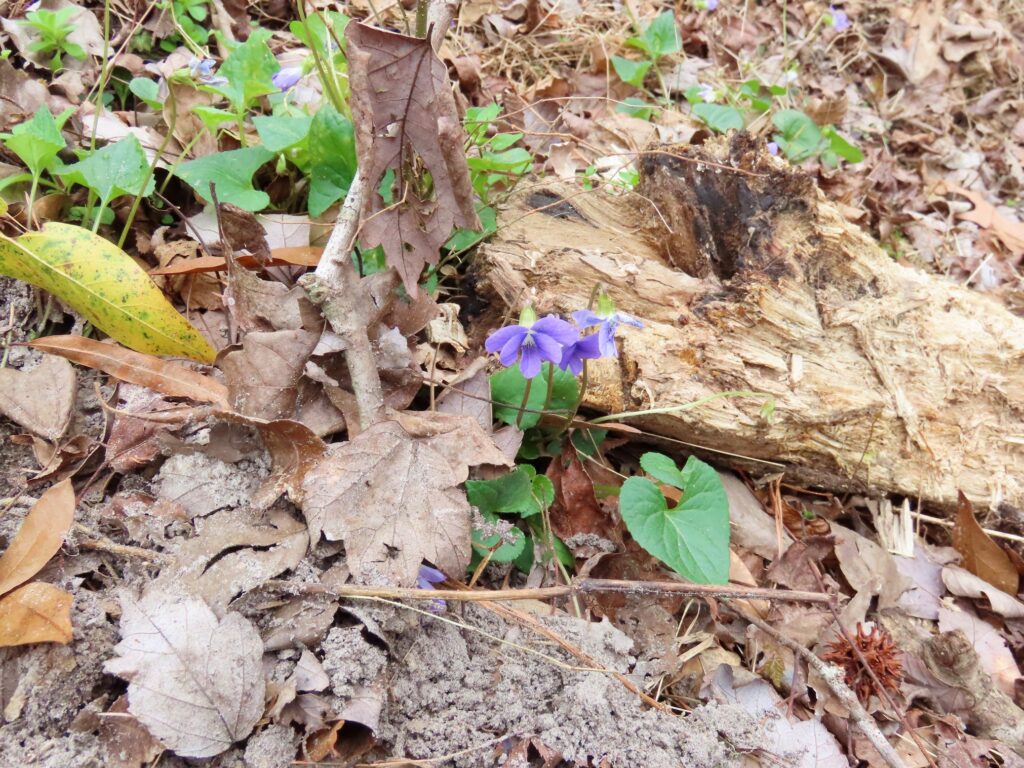
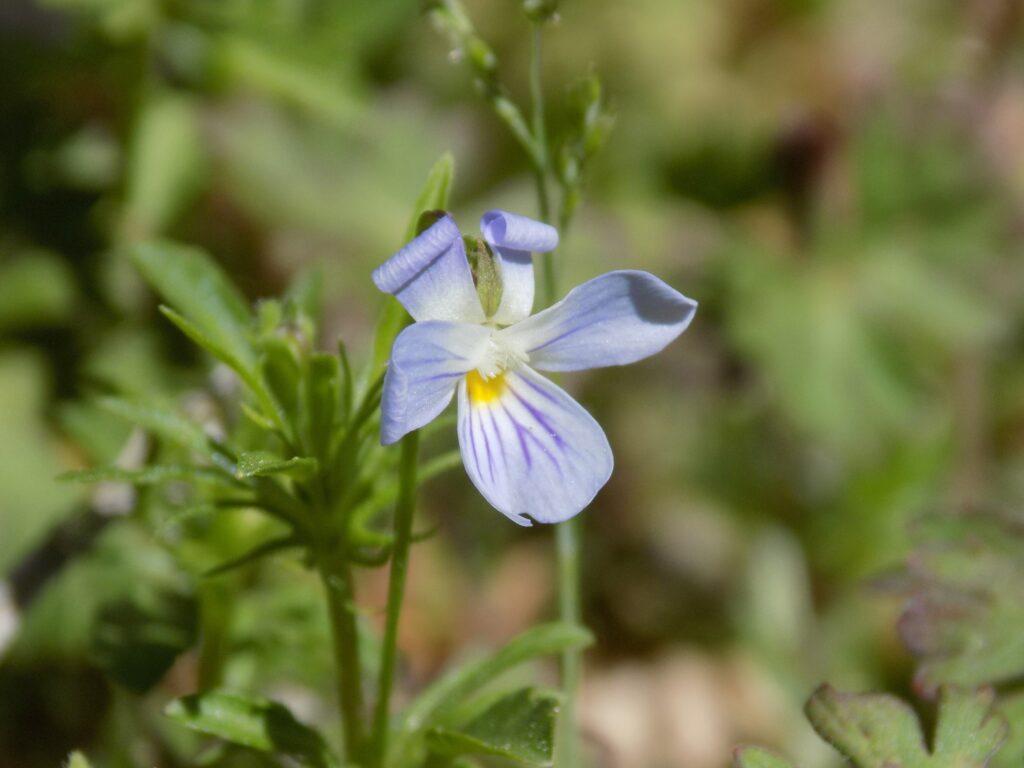
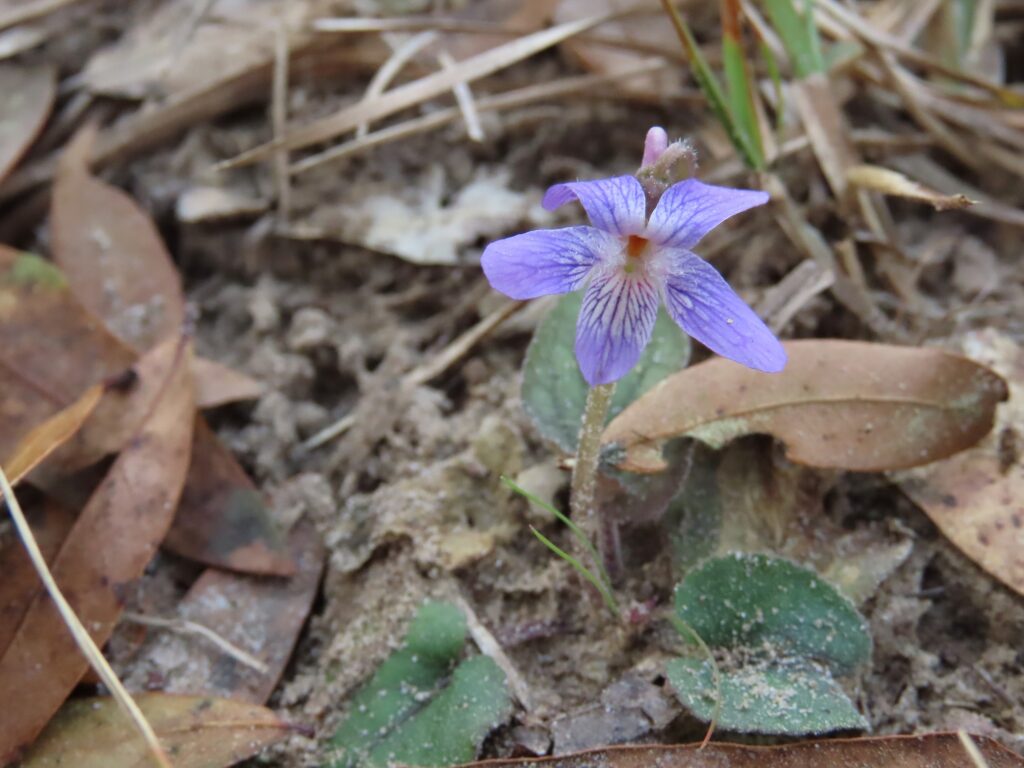
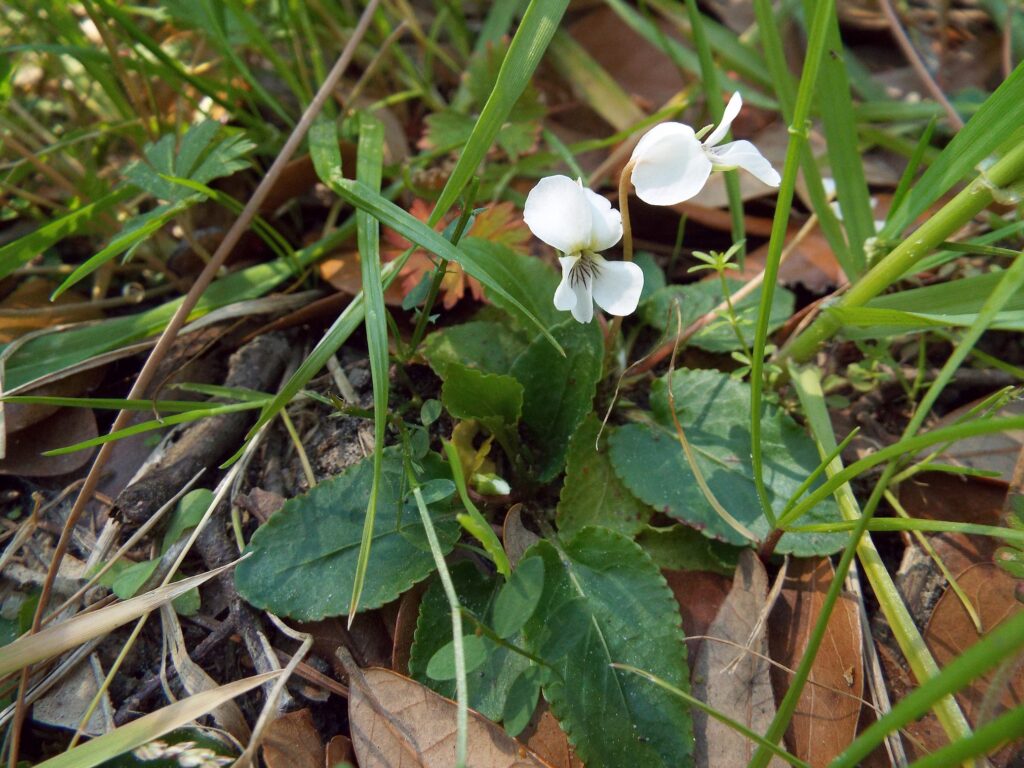
This week for Flora and Fauna Friday it’s one of our smallest, earliest, and most commonplace wildflowers, the Violets of genus Viola.
The Violets are a well-known genus of wildflowers. Ornamental varieties of several species have been used in gardens for centuries. We have many native species common to the Lowcountry that can be found blooming each spring across almost every habitat. Our native Violets as a whole are low-growing plants with relatively large, simple leaves. They have a small, bilaterally symmetrical flower held above the plant on a narrow stalk and petals colored either white, violet, magenta, or some combination of those three. Our Violets all bloom during March but some may start in February and others go through April. A whole Violet plant may only be four inches around and two inches high. They’re perennials commonly found in woodland clearings, forest edges, and lawns where there is partial or full shade, blooming early in spring and spending the rest of the year resting in the shade.
Here in the Lowcountry we have eight common species. I’m just going to cover the four most common and recognizable in brief detail. The Common Violet (V. sororia) is in fact our most common violet. It has round to triangular leaves with a scalloped margin and a half-inch violet colored flower with faint white and purple striation or sometimes white with purple veins emerging from the center. It’s common in both forests and lawns. The Field Pansy (V. bicolor) is a small violet found in fields, pastures, and lawns with narrow, clustered leaves and a small pale-violet flower petals around a golden center bordered by white. The Prostrate Blue Violet (V. walteri) is found in shady forest floors and north-facing forest edges in sandy habitats. It tolerates deep shade well, has round blue-green leaves with prominent veins, and will even spread laterally through its stems on moist soils. Its flower is pale-purple in color with prominent royal-purple veins and a white center. Primrose-leaved Violet (V. primulifolia) is found in moist forests, along wetland edges, and in other damp locales. It has a scalloped, spade-shaped leaf and a small snow-white flower with a lime-green center and maroon veins creeping out onto the lower petals. Additionally, Sand Violet (V. affinis), Lance-leaved Violet (V. lanceolata), Wood Violet (V. palmata), and Southern Coastal Violet (V. septemloba) are also widespread in the Lowcountry but either not as commonly found or as easily identified.
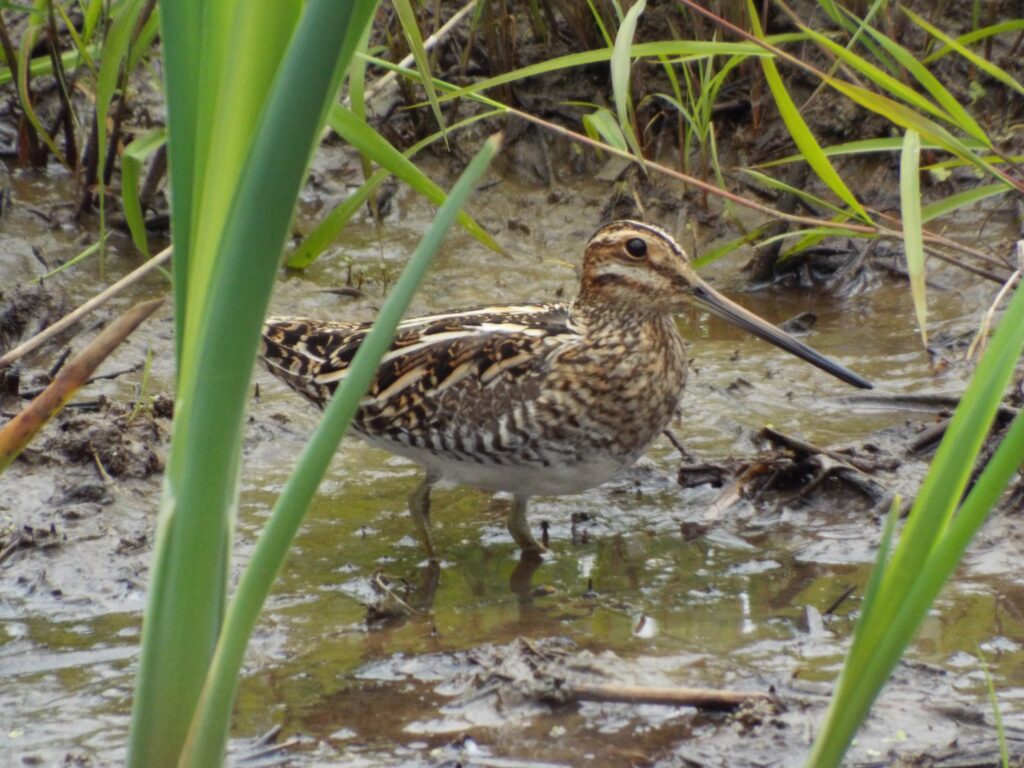
This week for Flora and Fauna Friday it’s a wily freshwater shorebird that many believe is make-believe, the Wilson’s Snipe (Gallinago delicata).
I’m sure many of you have tales of taking part in a “snipe hunt”, some incomprehensible campground ritual you practiced in good faith which quickly turned out to be a carefully crafted fool’s errand, all for entertainment at your expense. A made-up method for locating a made-up creature. Well, I’m here to tell you that Snipe really do exist! They’re just a lot easier to find then you may have been lead to believe.
The Wilson’s Snipe is our only species of Snipe found in South Carolina. It’s a medium-sized shorebird at about the size of a Quail. In appearance they look like an amalgamation of a Woodcock and a Dowitcher, with a long bill, large eyes, yellow legs, round body, streaked flanks, and cryptically colored plumage of browns, orange, white and black. Snipe are difficult birds to sneak up on but otherwise not that hard to find. They are common here in winter along wet fields, marshes, impoundments, and pond edges. They prefer freshwater habitat but will also pop up on brackish fringes. Snipe use their long bill to probe wet soil for insects and invertebrates, which they pluck out and eat. As alluded, Snipe are very stealthy and difficult to see due to their camouflage, general motionlessness, and crepuscular behavior. Normally, one doesn’t find them until they explode upward from the edge of a dike or drainage ditch, darting back and forth midflight before spiraling into the air on their powerful wings. However, if your eyes are keen and your motion slow, you can sometimes catch a glimpse of them between the reeds or corn stubble. Snipe are actually a game bird in South Carolina too, so one can go on a true Snipe Hunt, without the practical jokes, if they are so inclined.
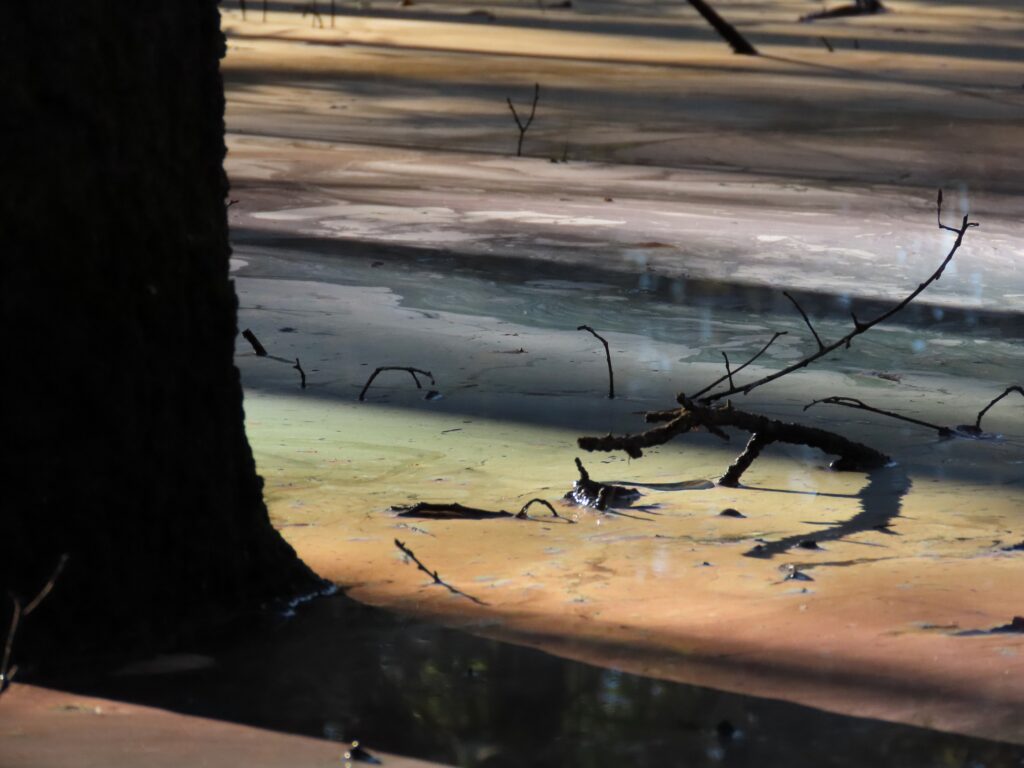
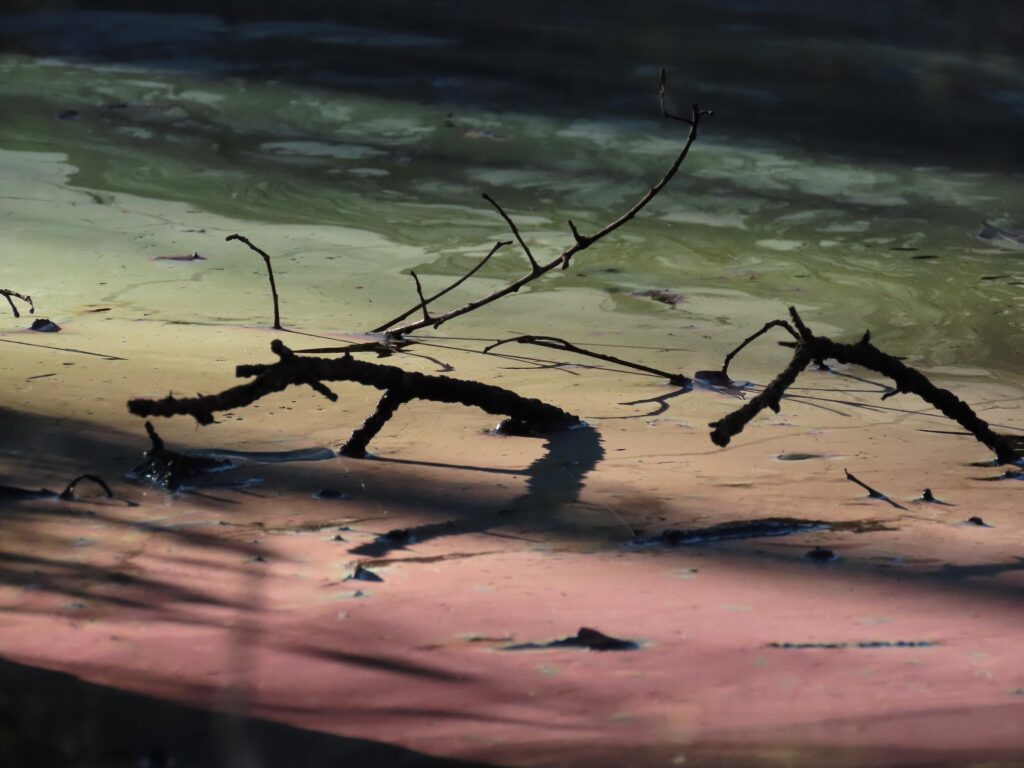
This week for Flora and Fauna Friday we’re talking about something a little off topic, an ecological phenomenon rather than a specific organism; this week we’re in awe of the Rainbow Swamp.
Cruising down a causeway a kaleidoscopic glimmer grabs your gaze. A truly Technicolor tapestry torn between the tree trunks. You’re beholding the rainbow swamp. Every winter our swamps and bottomlands are blessed by this truly beautiful chromatic aberration of a reflected refraction. This phenomenon arises from a complex interplay of geology, hydrology, meteorology, astronomy, ecology, and biochemistry that all together lead to our Lowcountry swamps being bathed in a blazing spectral display.
Let’s start with the geology and work our way up. Our swamps and bottomlands are found in low elevation areas called floodplains. Their low elevation means that they naturally have a high water table and that rainfall from surrounding areas flow into these floodplains. Floodplains have overtime accumulated a clay substrate which is not particularly pervious to water. Our bottomlands are the lowest areas of the floodplain which are either inundated year-round or fill seasonally. Species of trees and shrubs that can tolerate this long term flooding colonize these areas and transform it into a swamp, a type of forested wetland. As the trees grow and photosynthesize, they pull water from the swamp and transpire it up into the atmosphere to cool themselves down. Thus in the spring and summer, the water level is lowest in a swamp due to evaporation from our hot summers and the transpiration of the overarching trees. Some swamps will go totally dry. However, tropical rains will often fill them back up during late summer and fall. In late fall these wetland trees go dormant and shed their leaves into the water below. As winter rains roll through our state, they fill the swamps to their brim as the trees are no longer taking up water and the cold temperatures slow evaporation considerably. Beneath the water’s surface, anaerobic microbes digest the leaves and various detritus that collect on the bottom of the swamp. During this decomposition process, assorted natural oils found in the plant detritus are released and float up to the surface of the water. Due to the cold temperatures, these oils are able to collect on the water’s surface without being broken down by aerobic microbes in the water column. In slow moving swamps and ephemeral pools, these oils are able to accumulate into a surface film. Our climate in the Lowcountry is also warm enough that the water’s surface rarely freezes either, which would either trap the oils beneath the surface of the ice. Another key piece of the puzzle is that in the winter the sun is lower in the sky due to the tilt of the Earth’s axis. This shallow angle of the sun means the light reflected off the water’s surface is also at a shallow angle and so we can easily see it at a standing height from a distance. As mentioned before, the trees have lost their leaves as well. So the light of the sun is able to hit the surface of swamp in winter where it would be in permanent shadow during summer. As the winter sun hits the surface of the swamp, it encounters the thin sheen of natural oils that have accumulated. These oils function like a natural refractive prism, reflecting each wavelength of light at a slightly different angle which results in the full color spectrum reflecting off the water’s surface. This prismatic effect is not perfect and some unrefracted light reflects too, which is what give the rainbow swamp its characteristic pastel palette. All these different requirements have to be met in order for the Rainbow Swamp to be visible, which is what makes it a uniquely beautiful part of the Lowcountry.
The best time to see the rainbow swamp is usually nine to eleven in the morning in mid-January through February. Yet it’s intensity, appearance, and location depends greatly on the weather throughout the winter leading up to it. It can appear on practically any still body of water with a clear surface beneath a forested wetland. However, given that the sun is in the southern sky, it’s only visible in its full glory when you’re facing southward.
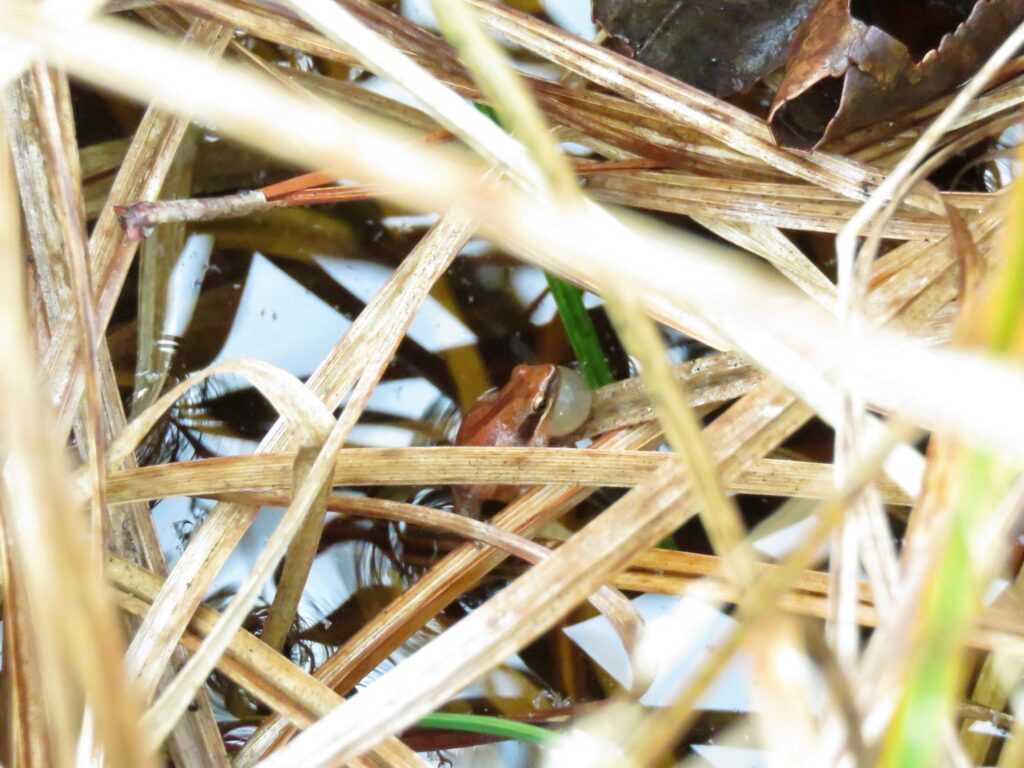
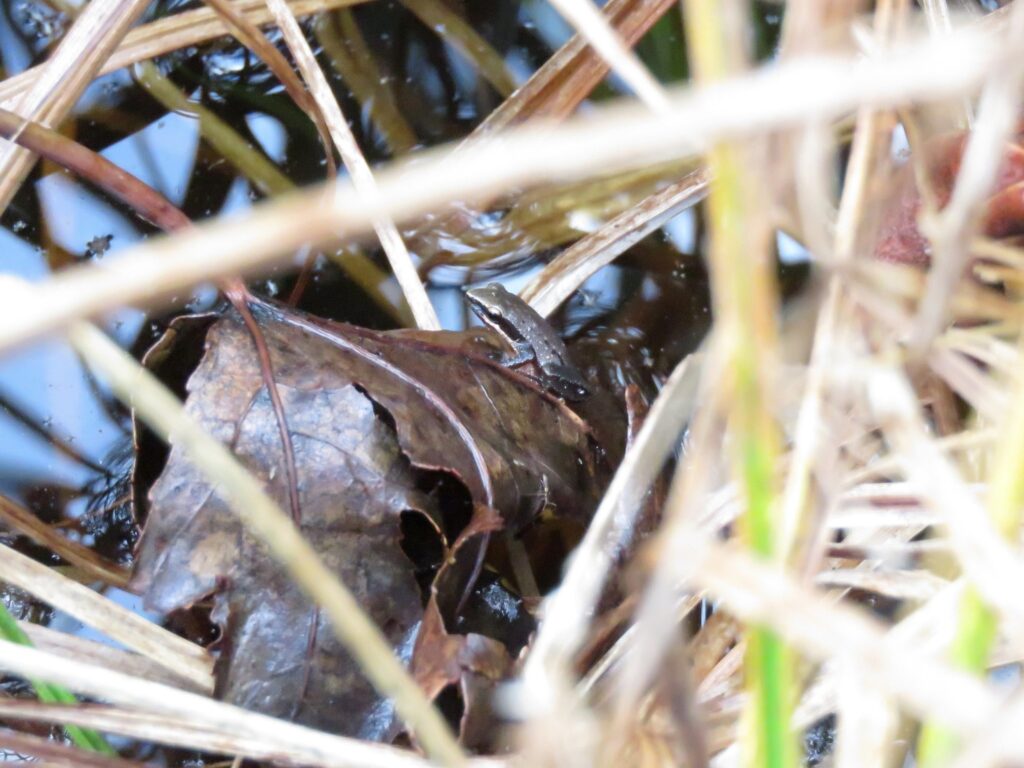
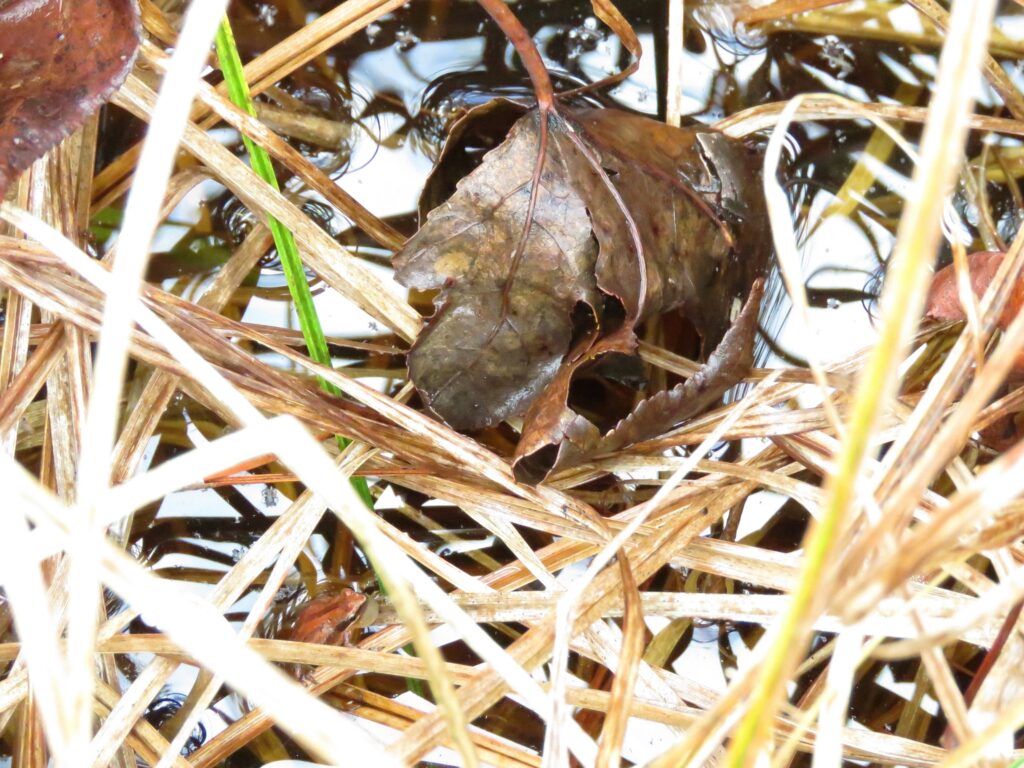
This week for Flora and Fauna Friday we’re taking a gander at our most miniscule member of the amphibians, the Little Grass Frog (Pseudacris ocularis).
A resident of the coastal plain of South Carolina, the Little Grass Frog is a widespread but hard to see member of the Chorus Frogs. They can be found in grassy ephemeral wetlands, especially those bordering forests, all throughout the Lowcountry. However what makes them hard to see is not their rarity, it’s their size. The Little Grass Frog is the smallest terrestrial vertebrate in the United States. A full grown frog is about the size of your fingernail! They’re also cryptically colored to boot, which makes them even harder to spot. The frogs are usually a bronze-brown or copper-orange color with a dark ebony-brown stripe running through and beyond the eye and occasionally some dark stripes down their back. This blends them in well with the grassy environments they prefer. The only good way to locate these frogs is by the male’s song. Male Little Grass Frogs will sing to court a mate. Like most frogs, they possess an expandable throat pouch which increases the volume and resonance of the call. For the Little Grass Frog, that call is a high pitched, glassy chirp which sounds much like the calls of many of our katydids and crickets. Little Grass Frogs will sing and breed throughout the year but I find them easiest to locate in mid to late winter after a good warm rain. They are one of our earliest frogs to stir each year, right alongside our Spring Peepers. Like many of our amphibian species, Little Grass Frogs depend on ephemeral wetlands to survive. Due to their itty bitty size, they’re a target for almost every species of fish and their eggs and tadpoles have little chance to survive in a fish-filled wetland. So they utilize ephemeral wetlands, which dry out every year, as their breeding pools. These wetlands typically fill up in winter while the vegetation is dormant and dry out in summer once the growing season is in full swing. Their shallow, predator-free waters make the perfect nursery for many frog species, including the Little Grass Frog.
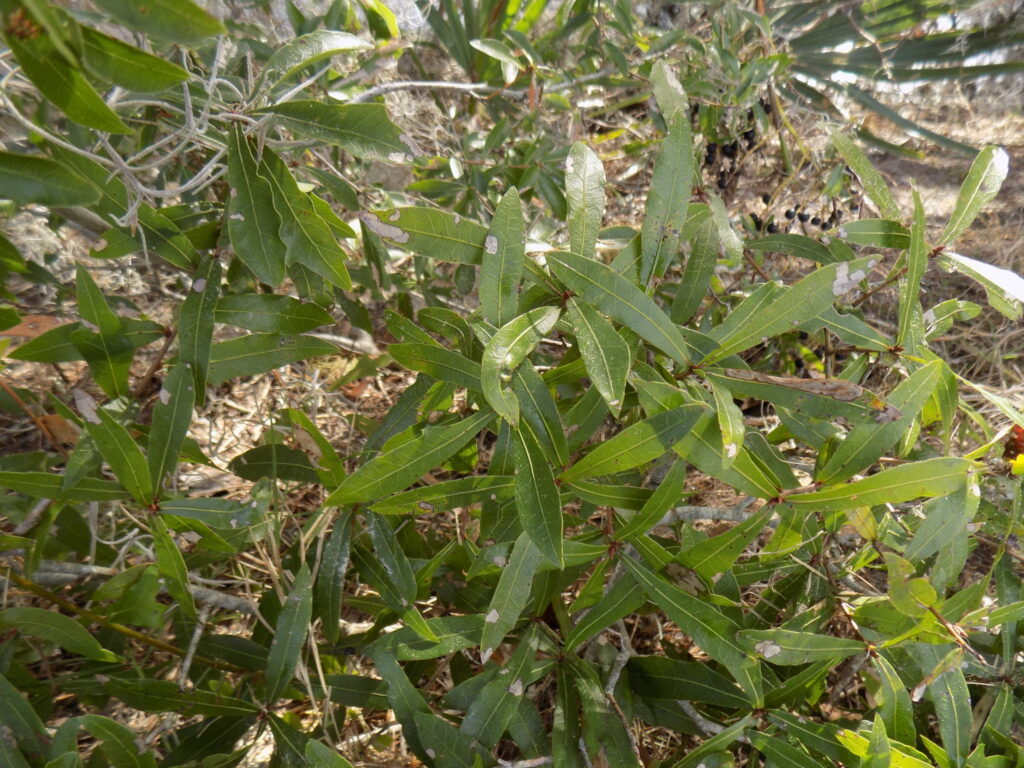

This week for Flora and Fauna Friday we have a much maligned and often misidentified member of the mighty oaks, Darlington Oak (Quercus hemisphaerica).
Darlington Oak, also called Sand Laurel Oak, is a medium-sized oak with a mostly straight growth form, relatively smooth gray bark with shallow vertical fissures, and small, simple, emerald-green evergreen leaves. It loves sandy soils, tolerates drought well, and grows best along our hot, dry uplands. It can grow tall and straight in a forest or broad and round when on its lonesome. Its acorns are small, round, and greenish-brown. Darlington Oak is found in the coastal plain of the Southeast. It is likely our most common member of the red oaks on Edisto Island and the second most common Oak behind the omnipresent Live Oak. However, most people I meet have never heard of it before, yet are nonetheless oh so familiar with it.
Darlington Oak is often confused with, or generically referred to as, Water Oak in our area. Water Oak (Q. nigra) is actually a different but closely related species that prefers moist clay soils and has larger spatula-shaped deciduous leaves. In fact, there are two other oak species, Laurel Oak (Q. laurifolia) and Willow Oak (Q. phellos) that are also closely related and look very similar to Darlington Oak. It doesn’t help either that they can all interbreed and hybridize. But I digress. Darlington Oak and Water Oak are of note because they are derided by property owners across the Island. These two species have a propensity to drop limbs, collapse, uproot, or spontaneously die that is unmatched by our other common tree species. They do make good firewood at least.
Water Oak earned this reputation from its less than rot-resistant heartwood and preference for wet, humid woodlands. Their preference for moist clay soils also means they don’t develop all that deep or robust of a root system. So they topple easily. Darlington Oak, however, lives on our driest, sandiest soils where it grows a deep and expansive root system and rot is not as big of a concern on these well drained soils. This makes Darlington Oak a bit sturdier and longer lived than Water Oak but it is prone to shedding limbs nonetheless. What rots Darlington oak is instead drought. Drought stresses the trees which, if severe, can kill the tree outright but more often makes them more susceptible to disease. Disease creates chronic stress and allows saprophytic soil fungi to invade the trunk. Over the years these fungi will worm their way throughout the tree, weakening it structurally, until one day the whole tree collapses. This fungal invasion is also what causes the tree’s interesting habit of sheering clean off at the soil line with nary a root showing. The heartwood becomes weakest near the soil where the fungal attacks are most concentrated and the physical stress on the trunk is most concentrated at this point as well. So when a hurricane blows through, trees can snap clean off at the bottom. Oaks of all types can also rot from the top down. If rainwater is able to collect in a trunk fork for too long, it will eventually lead to the bark beneath dying and the wood below slowly rotting ever deeper. This can lead to a tree top suddenly splitting apart or shearing clean off as the core of the trunk is hollow.
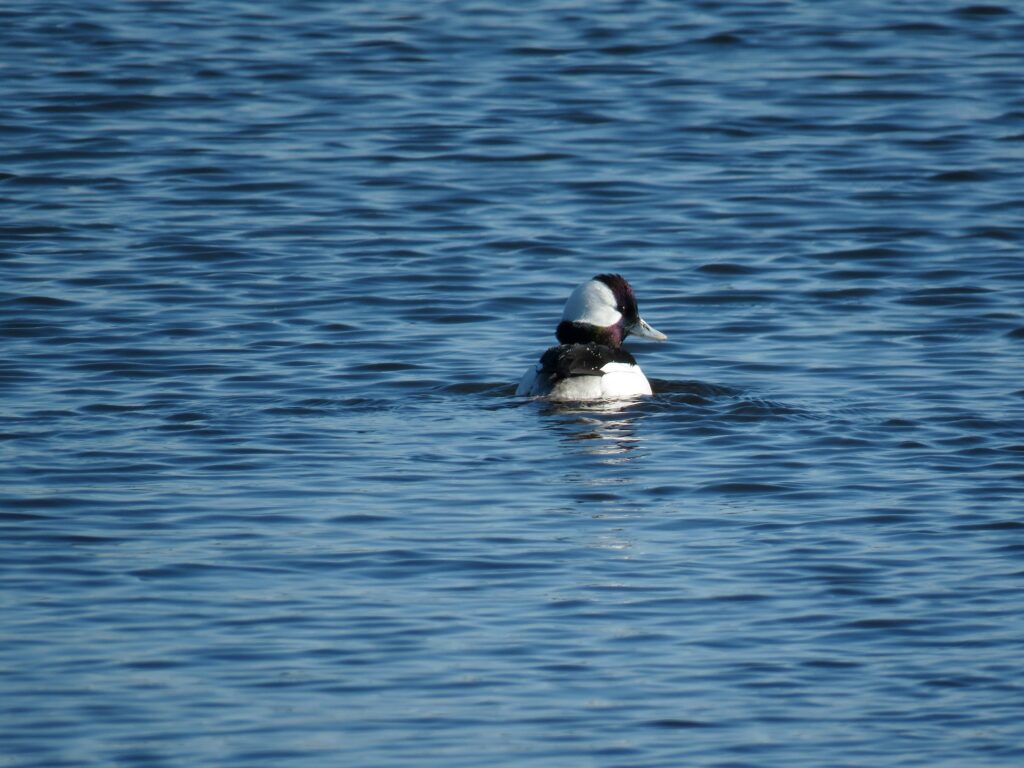
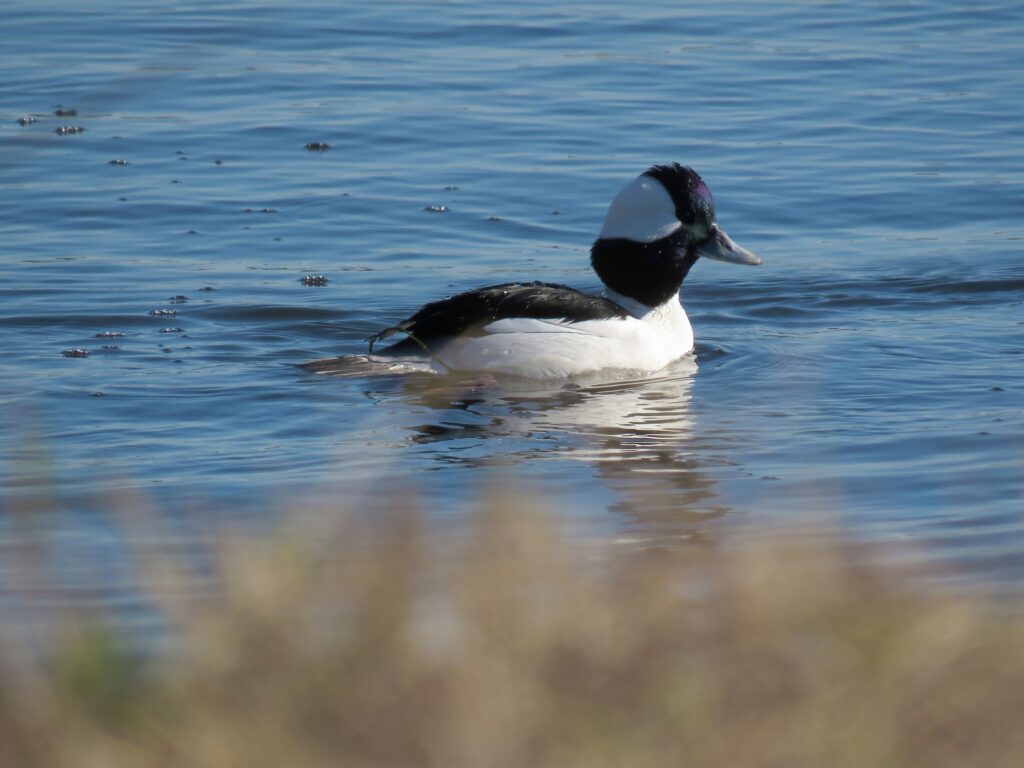

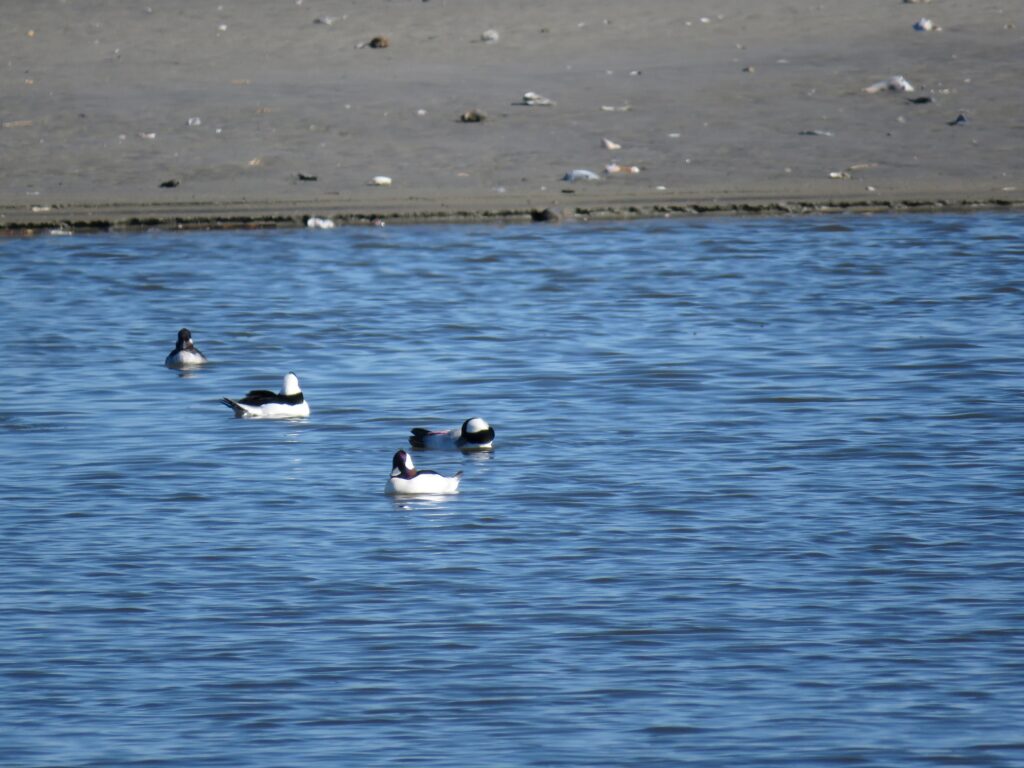
This week for Flora and Fauna Friday it’s a one of our winter waterfowl, the Bufflehead (Bucephala albeola).
Buoying between the breakwaters and burying itself beneath the brine is how the Bufflehead enjoys its vacations Edisto Island. One of our most common winter waterfowl, the Bufflehead can often be spotted cruising down our creeks or sailing through the surf and sea throughout the winter months. They are common in winter throughout the coastal United States and breed in Canada come warmer times. Buffleheads are our smallest diving duck and about the size of a Teal. The birds have a short bill, large round head, and a mainly monochromatic plumage. Females have a circular head that’s charcoal-black with a white elongated spot below and behind the eye. Their above is that same charcoal black and the below a sooty gray and white. Males are a bit more over-stated with an ink-black back, ice-white belly, and a tall pointed head wrapped in an iridescent sheen of green that blends into purple and topped with a snow-white edge pointing down to the eye and drawing your attention beyond to the aluminum-gray bill. Buffleheads are diving ducks and thus they stick to deeper waters. You’ll most often spot them on lakes, deepwater creeks, inlets, and just off the beach cruising alone or in small flocks. To dive, they throw themselves forward, head outstretched, and slip beneath the drink. Underwater they search for crustaceans, mollusks, and snails to eat and generally stay under for about ten to fifteen seconds.

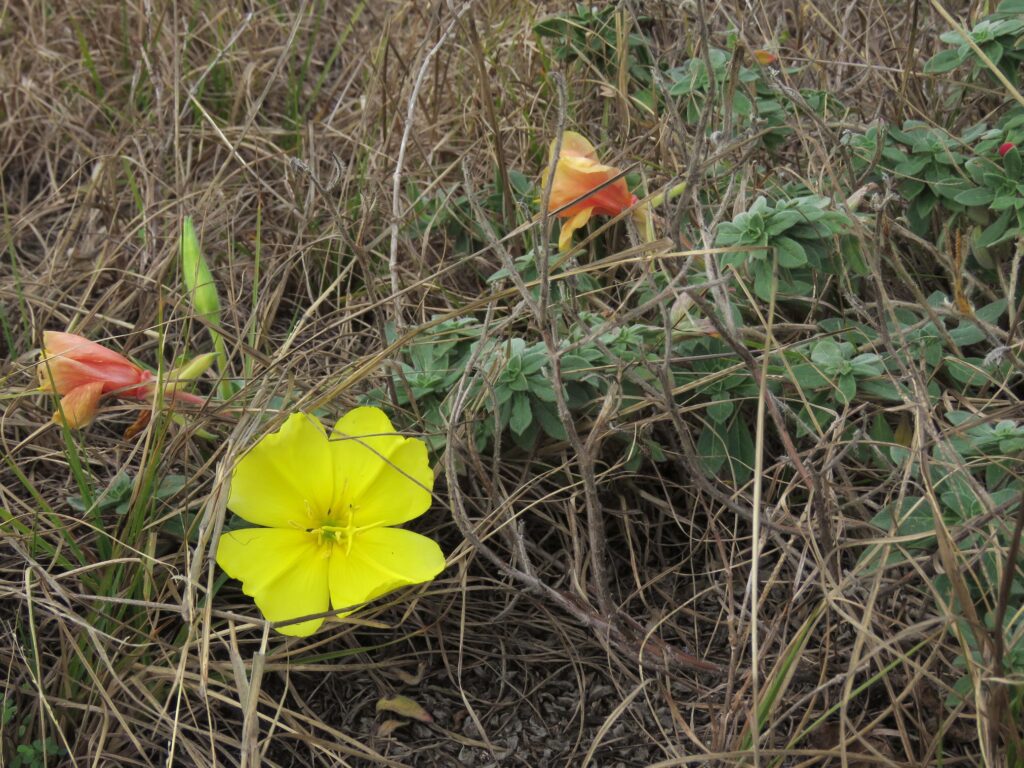
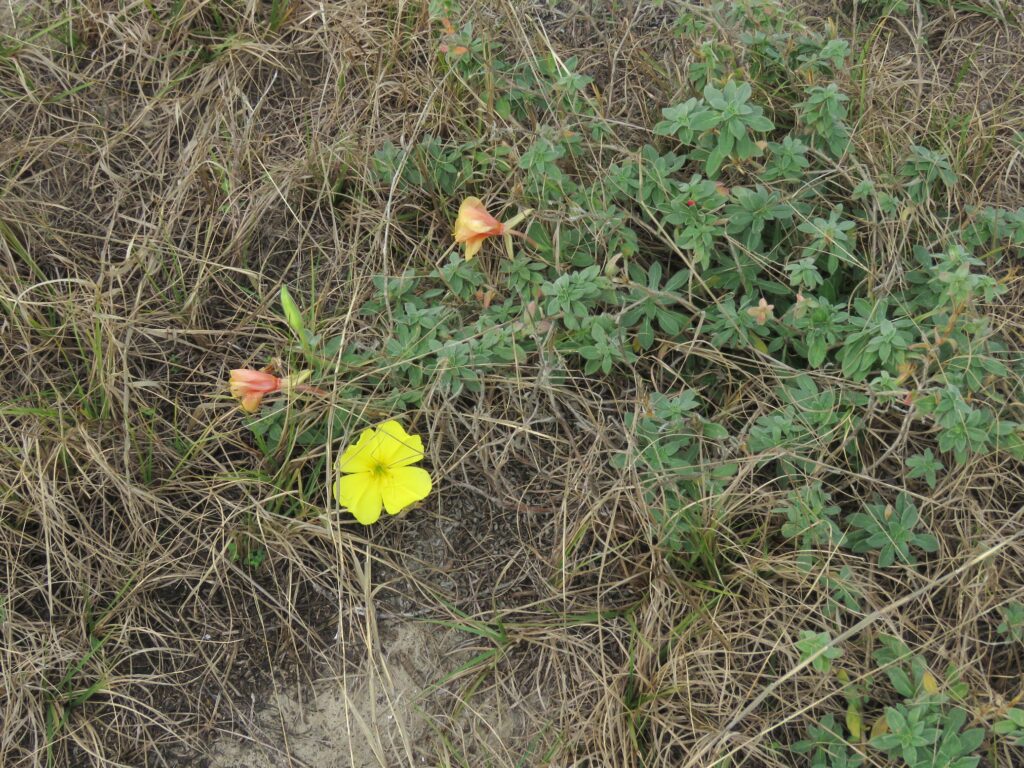
This week for Flora and Fauna Friday it’s a blossoming beach winter wildflower, Beach Evening-Primrose (Oenothera drummondii).
Winter weather leaves us wishing to welcome warm winds and waking wildflowers. Well I’m pretty good at publishing the hot air part of that equation but I can’t do much to make the flowers stir. However, I can at least highlight one of our few cold weather flowering plants. Beach Evening-Primrose is a not an uncommon member of our beach dune ecosystems. It does not grow on the beach itself but is found just behind the dunes. However, its cousin, Seabeach Evening-Primrose (O. humifusa), does grow on the beach. (Just to make things confusing.) Beach Evening-Primrose has a weakly upright posture and usually grows as a low shrub. Its leaves are simple and lance-shaped with a bluish-gray cast to their color. Beach Evening-Primrose is quite similar in appearance to some of our other Evening-Primrose species but what makes it special, apart from its adaptation to the harsh beach dune ecosystem, is its second bloom period. Its primary bloom period is April. Yet, here on Edisto, and the surrounding barrier Islands, you’ll often see this species in full bloom in the middle of January. Four glowing golden-yellow heart-shaped petals folding out into a nearly three inch flower, fluttering in the chilling ocean breeze. It’s an odd but reinvigorating sight in the midst of winter.
An interesting tidbit about this species is that there is evidence to suggest that it can “hear” certain sounds and react to pollinators. A recent study [Viets et al. 2019] found that Beach Evening-Primrose flower petals would vibrate to the hum of insect wingbeats and signal the plant to sweeten that flower’s nectar within just a few minutes. Such a reaction could increase pollination rates by getting preferred pollinators to stick around longer and come back more often while letting the plant avoid wasting nectar on non-pollinating insects or surface bacteria. Whether this acoustic response has any practical benefit to the plant in a natural setting has yet to be studied but the general auditory capacity of plants is a fascinating thing to think about.